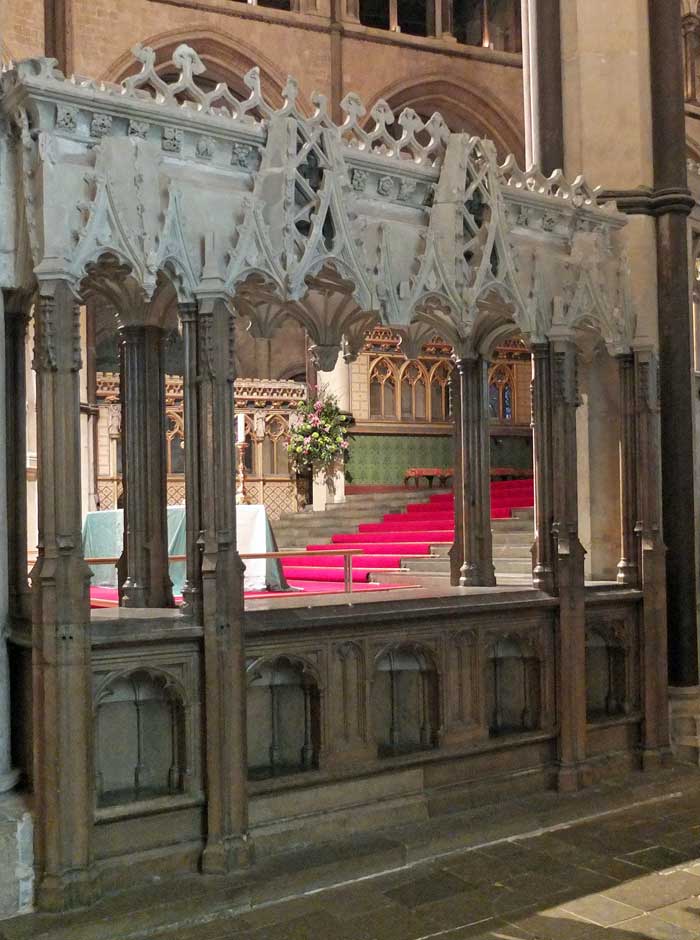Archbishop of Canterbury (1375-1381) – for more click here
Simon Sudbury met an ignominious end in London during the Peasants’ Revolt of 1381 when he was decapitated. His headless corpse was later interred within a large tomb in Canterbury Cathedral, positioned in the choir screen, close to the High Altar. The exulted position of the tomb perhaps reflected the fourteenth century perception of Simon Sudbury as a holy martyr. The table tomb once supported an effigy and was described in John Leland’s Itinerary (c. 1538–1543) as, “Symon Suthebyri lyith in the highe tumbe of coper and gilte …”; the copper figure was no doubt removed and melted down. The depression on the west side of the marble top would appear to be that for the stone cushion on which the head of the effigy lay. The table tomb is composed of panels of Purbeck Marble and has five side niches said to be for private prayer, perhaps indicating that the tomb also served as a shrine. The “ceiling” of each niche is vaulted in Caen Stone. Viewed from the north the tomb can be seen to be less elaborate and clearly it was designed to be viewed from the south choir aisle. The low plinth on which the tomb stands is composed of five slabs of Purbeck Marble, the central stone containing several prominent white shells of the freshwater mussel Unio. Above the tomb is a slightly damaged canopy carved from Caen Stone.

